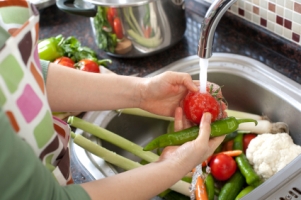 A deadly E.coli outbreak that has afflicted Germany and other parts of Eastern Europe has sickened nearly 2,000 people to date. According to the New York Times, the deadly outbreak has been traced to tainted domestic sprouts and forced the closure of several farms in the Northern part of the country.
A deadly E.coli outbreak that has afflicted Germany and other parts of Eastern Europe has sickened nearly 2,000 people to date. According to the New York Times, the deadly outbreak has been traced to tainted domestic sprouts and forced the closure of several farms in the Northern part of the country.
While this news might send some people running to empty their produce bins and avoid green vegetables, some public health experts are skeptical of these claims.
“We would want either epidemiological evidence or confirmed laboratory evidence,” Dr. Robert Tauxe, deputy director of food-borne diseases for the Centers for Disease Control and Prevention in Atlanta, told the New York Times.
Other medical professionals recommend using caution when approaching fruit and vegetable consumption.
“This has been an increasing problem and a challenging one. We have seen E. coli in everything from berries to spinach and now sprouts. For the most part, the bacteria is on the surface [of fruits and vegetables] but there has been evidence that this bacteria contaminates lettuce through use of manure fertilizers,” said Dr. Tim Harlan, M.D. and author of Just Tell Me What To Eat. “However, in some cases there have been E. Coli on greens and vegetables that have not been fertilized this way.”
Since you shouldn’t avoid your leafy greens at all cost, Harlan recommends taking some precautions and following a few simple guidelines when prepping your produce.
Wash up. The E. coli bacteria mostly grows well on the cut surface of fruits and vegetables. Rinse them well and then take care that you don’t contaminate them or other foods while slicing them on the cutting board. “A lot of bagged salads have been washed and are labeled ‘pre-washed’ or ‘ready to eat,'” said Harlan. “The recommendation is to rinse them again to be sure.” Some studies have shown that bacteria may exist below the surface of leafy greens, so rinse leaf by leaf for best results.
Keep greens and vegetables refrigerated. Because bacteria can grow faster in foods that are older or are deteriorating, purchase the freshest ingredients possible and store them in proper temperatures. “Don’t let produce, especially the produce you have cut, sit around at room temperature,” said Harlan.
Discard outer leaves when possible. For sprouts, lettuces and cabbages that you are going to eat fresh, remove and discard the outside leaves. If you are going to cook the cabbage, make sure that the temperature reaches a minimum of 150°F.
Also Read:
Government Plans to Improve Food Safety
